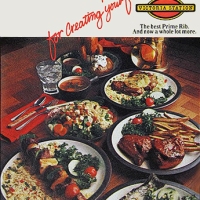Through most of American history the principal reason for barbecues was political campaigning. These outdoor events were characterized by huge crowds who feasted on animals cooked whole, such as pigs, sheep, oxen, and cattle, suspended on poles or laid on grates over charcoal pits dug in the ground. A Democratic Party barbecue in Lexington, Kentucky, in July of 1884 drew 10,000. Eighty-five oxen were roasted along with many sheep, hogs, and chickens. Accompanying dishes included burgoo (stew), “wagon-loads” of bread, and vegetables.
Barbecues were not usually commercial ventures until the 20th century, yet they were not entirely unknown among earlier caterers. A Tea and Coffee House in outlying Boston in 1769 offered to host barbecues for groups, “either Turtle or Pigg.” Also, occasionally in the 19th century a barbecued rabbit or such would show up on a hotel menu, particularly in the South. And toward the end of the 1800s barbecue stands, like hamburger stands, were likely to appear at fairs and other outdoor festivities.
 Although barbecue remains a relative rarity in Eastern restaurants up to this day, it began to show up at roadside stands elsewhere in the country not long after the turn of the century. Stands grew popular in the 1920s, probably because they were often located on cheap real estate at the edge of town where they were ideal for a pleasure drive at a time when many Americans were acquiring cars. The Pig Stand, often cited as America’s first curb service drive-in, started in Dallas in 1921 on the Dallas-Fort Worth highway. Memphis also built a strong reputation for barbecue restaurants — Leonard’s began in the 1920s while The Shanty Inn started later but both were known for barbecue cooked in a smoke oven. Yet barbecue was not only a product of the South. Barbecue shacks, shanties, and stands could be found, for instance, in Missouri, Kansas, Arizona, California, and Utah, particularly in the 1930s when the “roadside eats” business lured people looking for ways to make a living. Detroit became a barbecue mecca during World War II when Southern blacks moved North to work in the auto industry.
Although barbecue remains a relative rarity in Eastern restaurants up to this day, it began to show up at roadside stands elsewhere in the country not long after the turn of the century. Stands grew popular in the 1920s, probably because they were often located on cheap real estate at the edge of town where they were ideal for a pleasure drive at a time when many Americans were acquiring cars. The Pig Stand, often cited as America’s first curb service drive-in, started in Dallas in 1921 on the Dallas-Fort Worth highway. Memphis also built a strong reputation for barbecue restaurants — Leonard’s began in the 1920s while The Shanty Inn started later but both were known for barbecue cooked in a smoke oven. Yet barbecue was not only a product of the South. Barbecue shacks, shanties, and stands could be found, for instance, in Missouri, Kansas, Arizona, California, and Utah, particularly in the 1930s when the “roadside eats” business lured people looking for ways to make a living. Detroit became a barbecue mecca during World War II when Southern blacks moved North to work in the auto industry.
 Despite the success of Pig Stands and Loves’ Wood Pit Barbecue (begun in Los Angeles in 1948), barbecue has not had a strong profile among nationwide restaurant chains. Maybe for this reason, along with regional variations in sauces and cooking methods, it is a favorite with fans of down-home “roadfood.”
Despite the success of Pig Stands and Loves’ Wood Pit Barbecue (begun in Los Angeles in 1948), barbecue has not had a strong profile among nationwide restaurant chains. Maybe for this reason, along with regional variations in sauces and cooking methods, it is a favorite with fans of down-home “roadfood.”
© Jan Whitaker, 2008













 It's great to hear from readers and I take time to answer queries. I can't always find what you are looking for, but I do appreciate getting thank yous no matter what the outcome.
It's great to hear from readers and I take time to answer queries. I can't always find what you are looking for, but I do appreciate getting thank yous no matter what the outcome.


